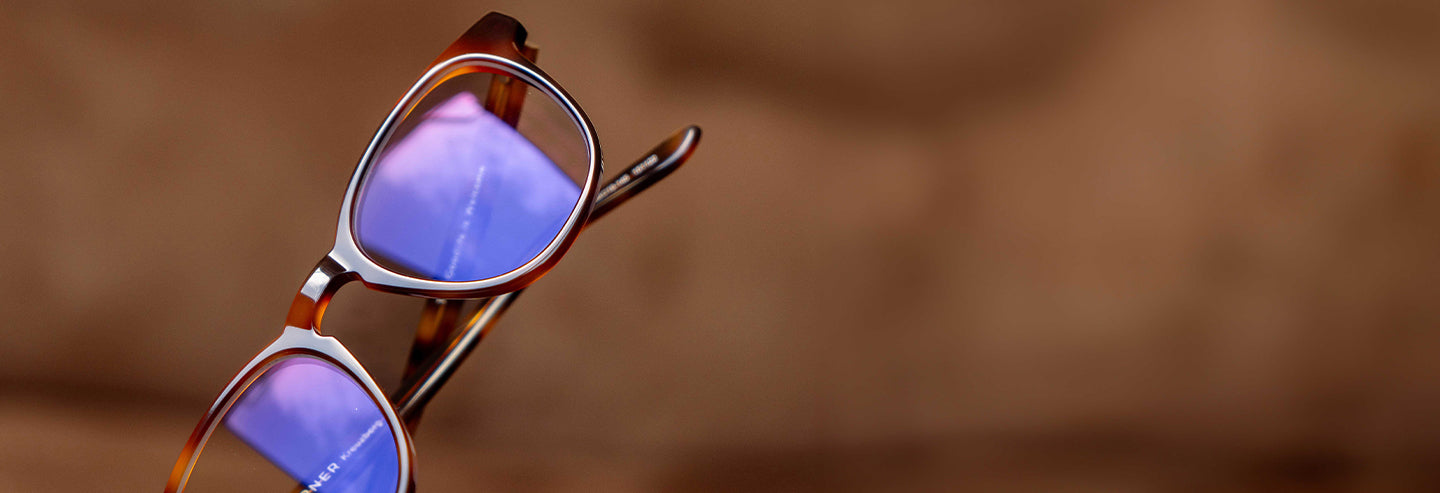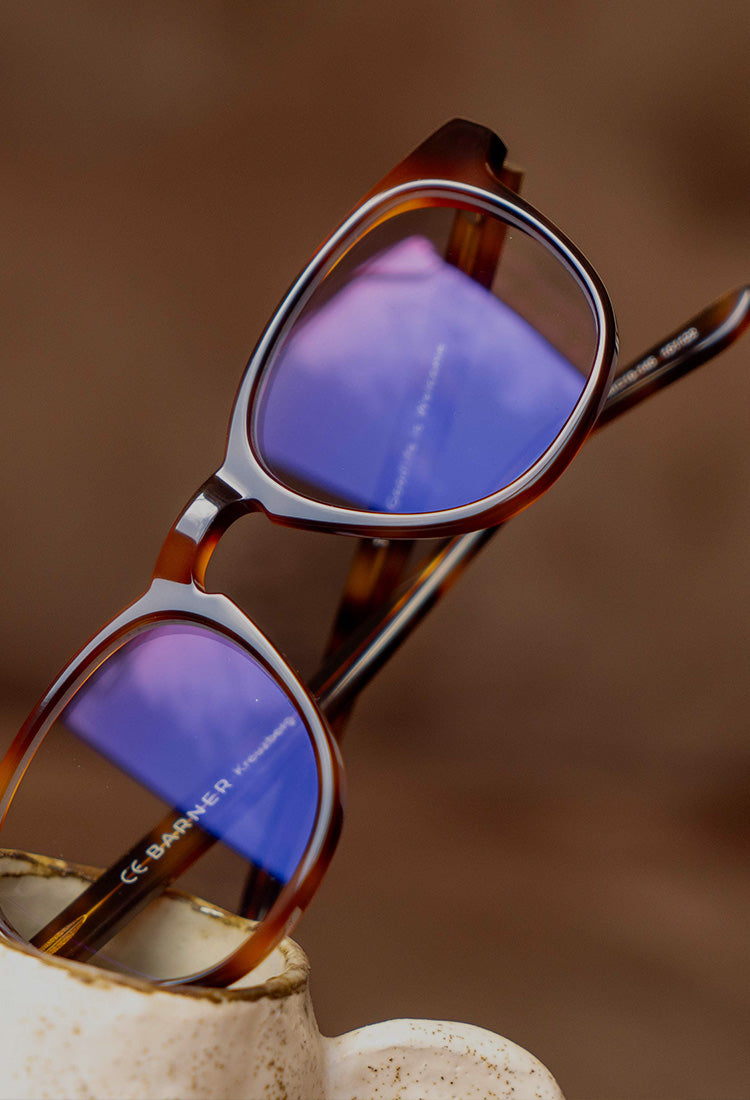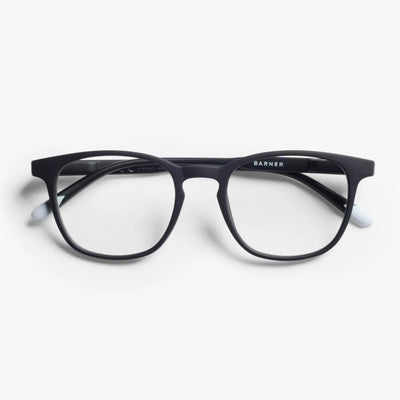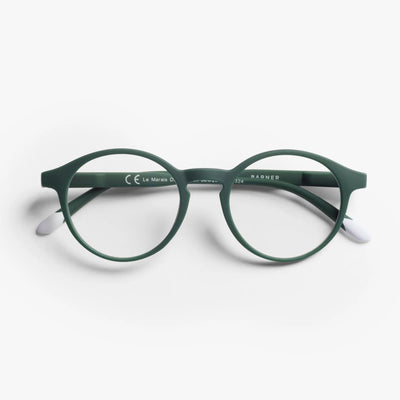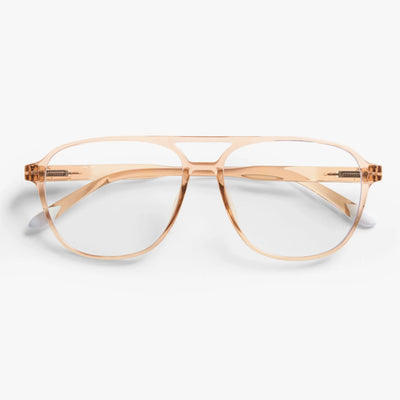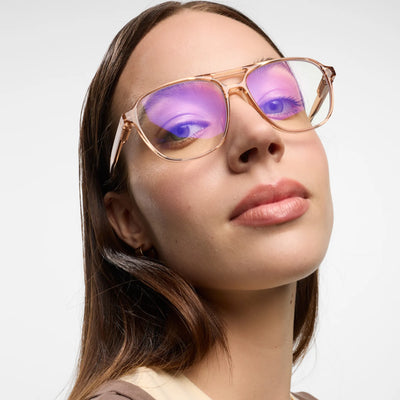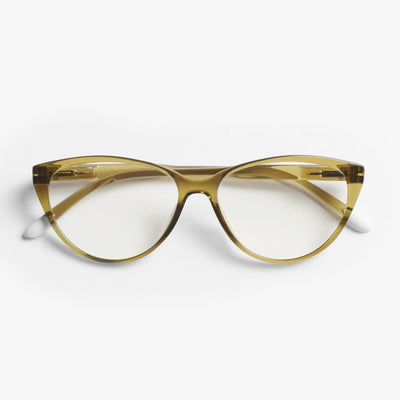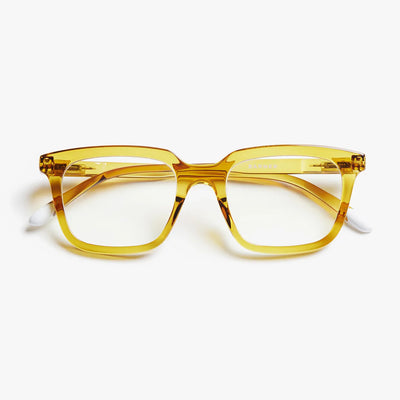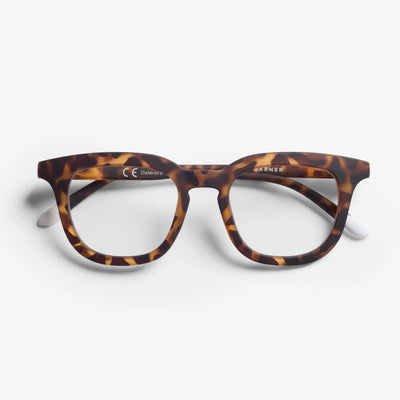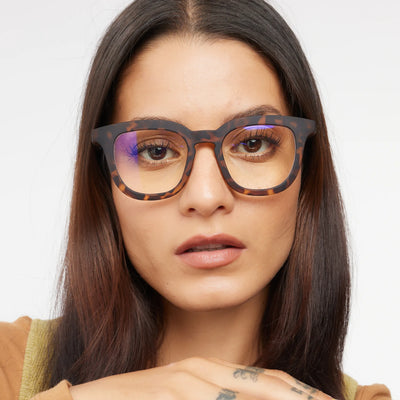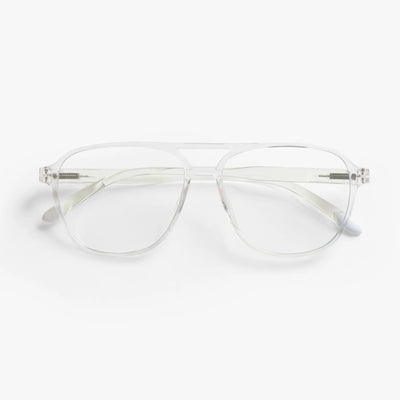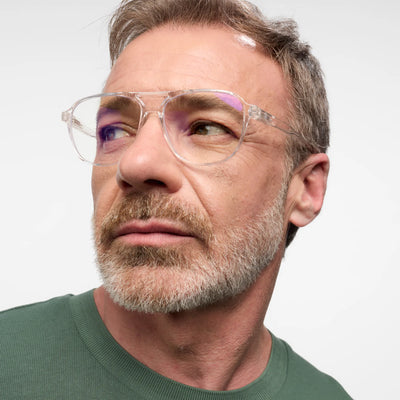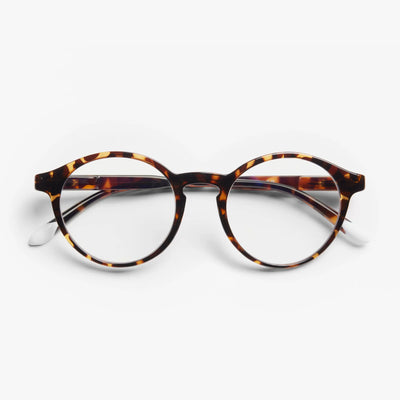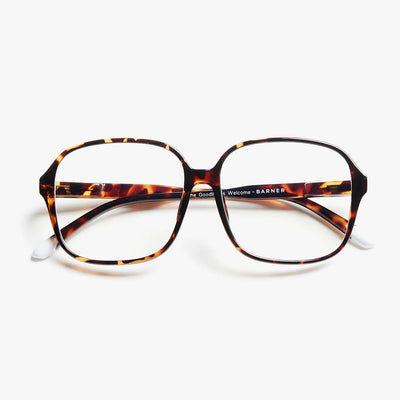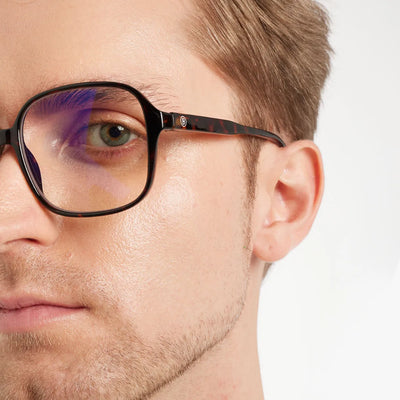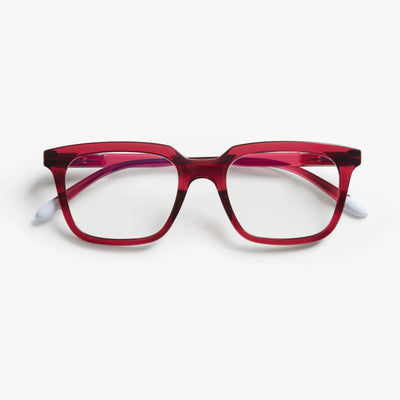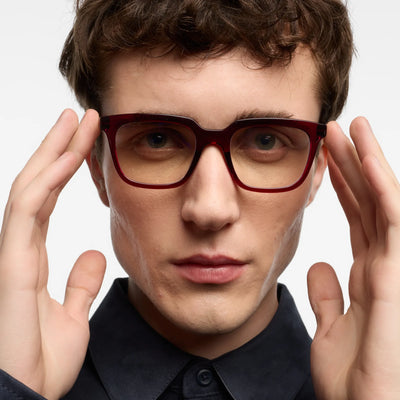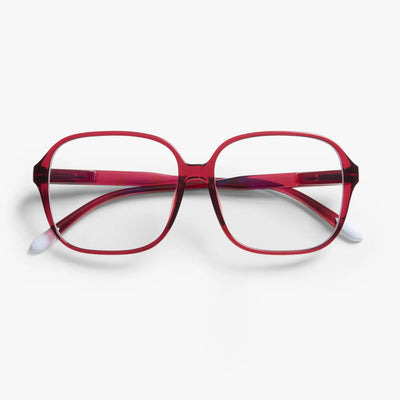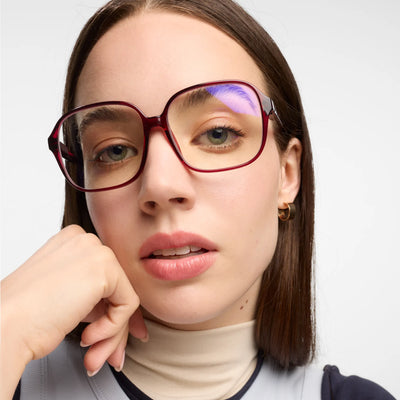Why use blue light glasses?
Why use blue light glasses?
Blue light glasses, also known as computer glasses or screen glasses, are becoming increasingly popular among the digital generation. After all, we spend more time using digital devices than ever before, both for work and recreation.
In fact, it’s estimated that we spend an average of 9 hours a day using laptops, smartphones, computers and tablets. During this time, our eyes are continuously working hard, without any type of protection.
That’s where blue light glasses come in.
Specifically designed with the digital generation in mind, Barner’s collection of blue light glasses efficiently protects against overexposure to blue light, which results in an all-round increase in our well-being.
There’s a perfect pair for all kinds of face shapes: here’s our fit guide to help you find the best computer glasses for you!
Proven benefits of blue light glasses
Computer glasses minimize blue light exposure to protect your eyes and offer you a better quality of life, all without sacrificing style. Barner’s blue light glasses are tailored to cater for the everyday digital lifestyle.
They offer a host of benefits, including:

Increased focus

Reduced glare and eye strain

Reduced CVS
Improved well-being
Better sleep cycles
How do Barner’s lenses block blue light?
How do Barner’s lenses block blue light?
All of the computer glasses in our collection come with specially coated lenses. This coating has been carefully developed to protect our eyes against the side effects of prolonged blue-violet and LED light exposure.
Our high-quality organic CR-39 lenses block 100% of blue light under 410 nm and 45% of the blue light on the 410 nm–450 nm spectrum.
Barner’s lenses use two technologies: the first reflects blue light and the second absorbs it. The effects are quickly noticeable: the eyes are more rested, relaxed and comfortable when using digital devices.
With the digital generation in mind, we have designed the clearest lenses with optimum protection, ideal for people who do color-sensitive work (like graphic designers, video/photo editors or any other profession in which seeing true color is a requirement).
Our protection against artificial blue light creates a perfect balance between color perception and blue light filtering.
Computer glasses for everyday life
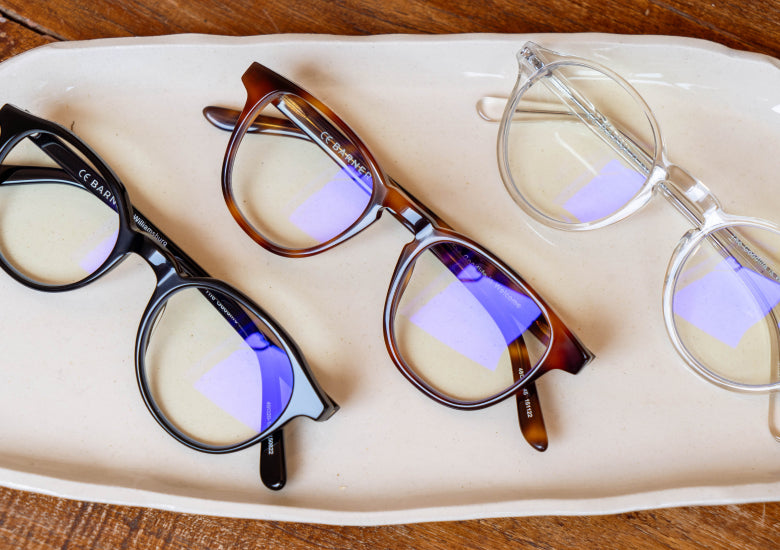
Computer glasses for everyday life
In the modern tech-driven era, our everyday experience is increasingly influenced by digital devices, both for work and leisure. And while technology has changed our lives for the better in so many ways, it has also created a negative impact on our health, sleep patterns and general wellbeing.
That’s why it’s becoming increasingly important to recognize the effects of blue light on our health and provide a solution.
Screen glasses, otherwise known as computer glasses, are starting to play a fundamental role in modern life. Whether working, socializing, or relaxing, blue light-blocking technology can help lead more productive, healthier lives. They are designed for comfort, so they can be worn all day, are made from sustainable materials, and come in a variety of designs to best suit your face shape and individual style.
Check out our blue-light glasses best-sellers:
What is blue light?
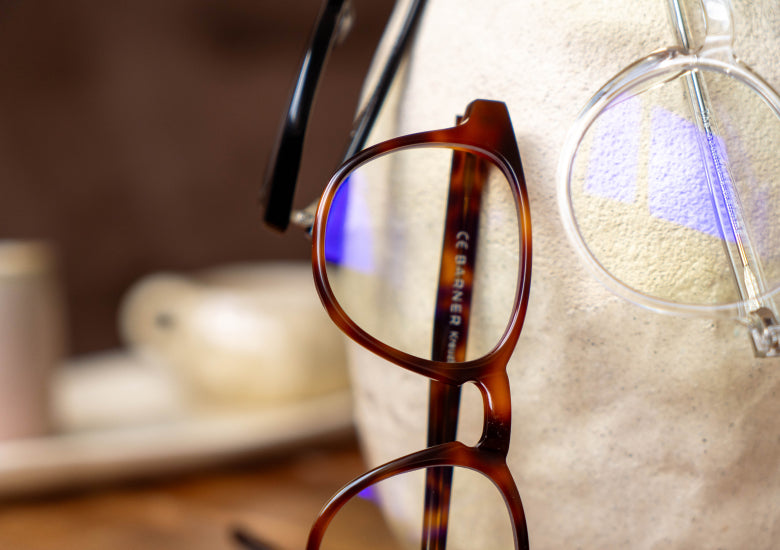
What is blue light?
Blue light refers to a portion of the light spectrum that can be seen by human eyes. At moderate levels, it’s beneficial for us, but overexposure can cause a variety of healthy problems.
Blue-violet light can typically be found within the 380-500 nm part of the light spectrum. It’s naturally emitted by the sun, and artificially emitted by digital screens. Research has found that blue light between 415 nm to 455 nm on the light spectrum is most damaging to our eyes.
Blue light surrounds us in our everyday life. In fact, the reason we see the sky as being blue is because of this type of light. When these short lightwaves from the sun collide with air molecules, it creates what our eyes interpret as an infinite blue sky.
Blue light is also responsible for regulating the circadian rhythms of our bodies: the sleep/wake cycles. That’s why, when we’re overexposed to blue light, especially at night, our sleep routines can be seriously affected, and computer vision syndrome symptoms might appear.
Understanding hev light

Understanding hev light
HEV, another technical term for blue light, stands for high-energy visible light. HEV is a short wavelength that produces the highest amounts of energy. It can be found near the ultraviolet (UV) end of the spectrum.
One of the main effects of HEV light on vision is that it can cause eye strain and dry eyes after prolonged periods of exposure. This is due to the shorter wavelengths and greater energy of HEV, which can be a result of the flashing, rapidly changing glare that our digital devices emit, forcing the eyes to focus harder.
















